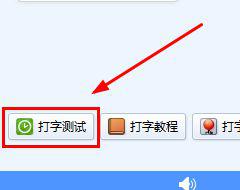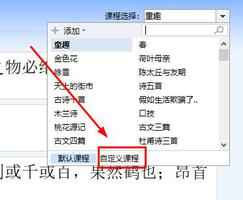C语言制作简易金山打字通功能的代码
本小项目最终的实现如下:
输入相应的字符,然后在最下面能够统计错误的个数,输入字符总个数,输入个数以及错误率。
那如何来实现这个小项目呢?规划如下,我们需要大致实现以下三个模块:
- (1)输入模块
- (2)显示模块
- (3)统计模块
实现过程:
使用getch()函数可以获取键盘输入的字符,显示可以使用Window自带的API来实现,统计就很简单了,就是计算输入字符的个数等等。。。接下来就是简单的软件逻辑的实现。
源码如下:
#include <stdio.h>
#include <string.h>
#include <Windows.h>
#include <unistd.h>
#include <conio.h>
#define NR(x) sizeof(x)/sizeof(x[0])
//清屏
#define ClearScreen() \
system("cls");
#define TITLE "金山打字通"
enum
{
LEFT = 1 ,
RIGHT ,
BACKSPACE ,
ESC ,
Char,
};
enum KEYBOARD
{
ESC_KEY = 27,
BACKSPACE_KEY = 8 ,
LEFT_KEY = 75 ,
RIGHT_KEY = 77
};
int iindex = 0 ;
int max = 0 ;
static int count = 0 ;
char buffer[1024] = {0} ;
int Get_User_input(HANDLE hOut,char *ch) ;
void Show_string(HANDLE hOut,const char *text) ;
//窗口初始化
void HANDLE_init(HANDLE hOut);
//定义设置光标结构体变量
CONSOLE_CURSOR_INFO cci;
//定义默认的坐标位置
COORD pos = {0,0};
int main(void)
{
char *text = "WelCome to School ... Good Good Work ,Day Day Up !" ;
char ch ;
int ret ;
HANDLE hOut;
hOut = GetStdHandle(STD_OUTPUT_HANDLE);
HANDLE_init(hOut);
printf("\n%s\n",text);
Show_string(hOut,text);
while(1)
{
if(max >= strlen(text))
break ;
ret = Get_User_input(hOut,&ch) ;
if(ret == ESC)
break ;
Show_string(hOut,text);
}
//关闭窗口句柄
CloseHandle(hOut);
return 0 ;
}
//窗口初始化
void HANDLE_init(HANDLE hOut)
{
SetConsoleTitleA(TITLE);
//获取当前的句柄---设置为标准输出句柄
//获取光标信息
GetConsoleCursorInfo(hOut, &cci);
//设置光标大小
pos.X = 0 ;
pos.Y = 2 ;
cci.dwSize = 1;
//设置光标不可见 FALSE
cci.bVisible = 0;
//设置(应用)光标信息
SetConsoleCursorInfo(hOut, &cci);
}
static int __Get_User_input(HANDLE hOut,char *ch)
{
char tmp ;
int type = Char ;
//关闭回显
pos.X = 0 ;
pos.Y = 2 ;
GetConsoleCursorInfo(hOut, &cci);
cci.dwSize = 100;
cci.bVisible = 0;
SetConsoleCursorInfo(hOut, &cci);
tmp = getch() ;
switch(tmp)
{
case ESC_KEY : type = ESC ; break ;
case BACKSPACE_KEY : type = BACKSPACE ; break ;
case LEFT_KEY : type = LEFT ; break ;
case RIGHT_KEY : type = RIGHT; break ;
}
*ch = tmp ;
//打开回显
pos.X = 0 ;
pos.Y = 2 ;
GetConsoleCursorInfo(hOut, &cci);
cci.dwSize = 100;
cci.bVisible = 1;
SetConsoleCursorInfo(hOut, &cci);
return type ;
}
//获取用于输入
int Get_User_input(HANDLE hOut,char *ch)
{
int type ;
type = __Get_User_input(hOut,ch);
switch(type)
{
case Char :
if(buffer[iindex] == '\0' )
buffer[iindex] = *ch ;
else
{
memmove(buffer+iindex+1 , buffer+iindex , max-iindex) ;
buffer[iindex] = *ch ;
}
iindex ++ ; max ++ ; break ;
//case LEFT : if(iindex > 0) iindex -- ; break ;
//case RIGHT : if(iindex < max) iindex ++ ; break ;
case BACKSPACE :
if(iindex > 0){
memmove(buffer+iindex-1 , buffer+iindex , max-iindex) ;
iindex -- ;
max -- ;
}
if(iindex == 0)
{
count = 0 ;
}
break ;
case ESC : return ESC ;
}
return 0 ;
}
//显示和统计
void Show_string(HANDLE hOut,const char *text)
{
system("cls") ;
printf("\n%s\n",text) ;
int i ;
int errno_Num = 0 ;
for(i = 0 ; i < max ; i++)
{
if(buffer[i] == text[i])
{
SetConsoleTextAttribute(hOut, FOREGROUND_GREEN | 0x8);
printf("%c",buffer[i]);
}
else
{
SetConsoleTextAttribute(hOut, FOREGROUND_RED | 0x8);
printf("%c",buffer[i]);
errno_Num++ ;
}
}
pos.X = 0 ;
pos.Y = 2 ;
cci.dwSize = 100;
cci.bVisible = 1 ;
SetConsoleCursorPosition(hOut,pos);
SetConsoleCursorInfo(hOut, &cci);
SetConsoleTextAttribute(hOut,FOREGROUND_GREEN | 0x8);
pos.X = 0;
pos.Y = 15 ;
SetConsoleCursorPosition(hOut,pos);
printf("错误的个数:%d", errno_Num) ;
pos.X = 0;
pos.Y = 16 ;
SetConsoleCursorPosition(hOut,pos);
printf("总个数:%d", (int)strlen(text)) ;
pos.X = 0;
pos.Y = 17 ;
SetConsoleCursorPosition(hOut,pos);
printf("输入个数:%d", max) ;
pos.X = 0;
pos.Y = 18 ;
SetConsoleCursorPosition(hOut,pos);
if(count == 0)
printf("错误率:0%%") ;
else
printf("错误率:%.2f%%",((float)errno_Num)/((float)max)*100) ;
pos.X = iindex + 1 ;
pos.Y = 2 ;
cci.dwSize = 100;
cci.bVisible = 1 ;
count = 1 ;
SetConsoleCursorPosition(hOut,pos);
SetConsoleCursorInfo(hOut, &cci);
fflush(stdout);
}
总结
以上是 C语言制作简易金山打字通功能的代码 的全部内容, 来源链接: utcz.com/z/360843.html









